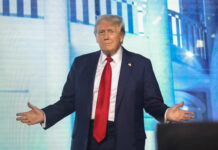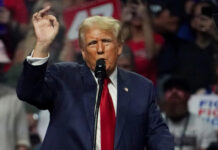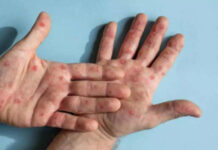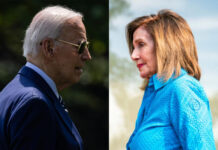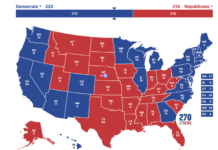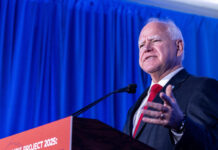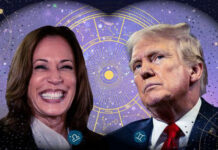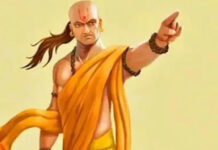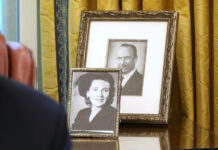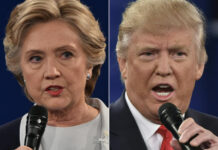March 20, 2016
HAVANA, CUBA – President Barack Obama arrived in Cuba on Sunday on a historic visit, opening a new chapter in U.S. engagement with the island's Communist government after decades of animosity between the former Cold War foes.

March 20, 2016
HAVANA, CUBA – President Barack Obama arrived in Cuba on Sunday on a historic visit, opening a new chapter in U.S. engagement with the island's Communist government after decades of animosity between the former Cold War foes.

President Barack Obama (R), arrives with first lady Michelle Obama as they exit Air Force One at the airport in Havana, Cuba on March 20.
Obama landed at Havana's Jose Marti International Airport aboard Air Force One, the presidential jet with "United States of America" emblazoned across its fuselage, a sight almost unimaginable not long ago.
Stepping down onto the red carpet in a light drizzle, Obama and his family were greeted by Cuban Foreign Minister Bruno Rodriguez, the top Cuban official present. The formal welcoming ceremony will be on Monday when Obama meets Cuban President Raul Castro at the presidential palace.
The three-day trip, the first by a U.S. president to Cuba in 88 years, is the culmination of a diplomatic opening announced by Obama and Castro in December 2014, ending a Cold War-era estrangement that began when the Cuban revolution ousted a pro-American government in 1959.
Obama, who abandoned a longtime U.S. policy of trying to isolate Cuba, wants to make his shift irreversible. But major obstacles remain to full normalization of ties, and the Democratic president's critics at home say the visit is premature.
Underscoring the ideological divide that persists between Washington and Havana, Cuban police, backed by hundreds of pro-government demonstrators, broke up the regular march of a leading dissident group, the Ladies in White, detaining about 50 people just hours before Obama arrived.
Traveling with first lady Michelle Obama, her mother and their daughters, Sasha and Malia, the president met first with staff of the newly reopened U.S. Embassy at a Havana hotel.
The Obamas then took in the sights of Old Havana, drawing cheers from small crowds of Cubans and foreign tourists. Obama was also hosted on a tour of Havana's 18th century cathedral by Cardinal Jaime Ortega, who played a key role in secret talks that led to the rapprochement 15 months ago.
"It's a historic opportunity to engage directly with the Cuban people," Obama told U.S. diplomats.
U.S. officials appeared unfazed by Castro's absence from the airport welcome, even though he personally met and greeted Pope Francis in September. Republican presidential front-runner Donald Trump tweeted that Obama's visit was a "big deal" but that he got "no respect."
Obama will hold talks with Raul Castro – but not his brother Fidel, the revolutionary leader – and speak to entrepreneurs on Monday. He meets privately with dissidents, addresses Cubans live on state-run media and attends an exhibition baseball game on Tuesday.

U.S. President Barack Obama and Michelle Obama arrive at Jose Marti International Airport on Airforce One for a 48-hour visit on March 20, 2016 in Havana, Cuba. Mr. Obama's visit is the first in nearly 90 years for a sitting president, the last one being Calvin Coolidge. (Photo by Joe Raedle/Getty Images)
Barack Obama has landed in Cuba with first lady Michelle Obama and their two daughters on his historic visit to the country. Obama has become the first US president to visit to the country since Calvin Coolidge in 1926. The trip is another step between the two nations to normalize relations – a process that began in Dec. 2014. On this two-day trip, Obama will meet Cuban President Raul Castro on Monday before addressing the Cuban people on Monday.
SYMBOLISM AND SUBSTANCE
The trip carries both symbolism and substance after decades of hostility between Washington and Havana.
It makes Obama the first sitting American president to visit Cuba since Calvin Coolidge arrived on a battleship in 1928.
It is also another major step in chipping away at remaining barriers to U.S.-Cuba trade and travel and developing more normal relations between Washington and Havana.
Since rapprochement, the two sides have restored diplomatic ties and signed commercial deals on telecommunications and scheduled airline service.
Major differences remain, notably the 54-year-old economic embargo of Cuba. Obama has asked Congress to rescind it, but the move has been blocked by the Republican leadership.
But welcome signs with images of Obama alongside Raul Castro popped up in colonial Old Havana.
Obama has used executive authority to loosen trade and travel restrictions to advance his outreach to Cuba, one of his top foreign policy priorities along with the Iran nuclear deal.
But Cuba still complains about U.S. control of the naval base at Guantanamo Bay under a 1934 lease agreement that Havana says is no longer valid and that Obama has said is not up for discussion. Havana is also unhappy with U.S. support for dissidents and anti-communist radio and TV programs beamed into Cuba.
Speaking to reporters, Foreign Trade and Foreign Investment minister Rodrigo Malmierca Díaz said Obama's regulatory moves "go in the right direction." But he added: "We can't reach a normalization of relations with the blockade still in effect and without resolving other themes of high importance."
'QUE BOLA CUBA?'
The Americans in turn criticize one-party rule and repression of political opponents, an issue that aides said Obama would address publicly and privately.
The Ladies in White and their male supporters protested after a Palm Sunday service and were pulled into police vans after they sat down to block a street. A similar scene plays out every Sunday, but this time it was more intense than usual. The government dismisses the dissidents, who are funded by U.S. interests, as mercenaries seeking to destabilize the country.
Obama's critics at home accuse him of making too many concessions for too little in return from the Cuban government and of using his trip to take an unearned "victory lap."
But Obama's more practical goal is to do everything he can to make sure his Cuba engagement cannot be rolled back, even if a Republican wins the White House in the Nov. 8 election.
Although general U.S. tourism to the island is still officially banned under the embargo, a sign of changing times was the presence of groups of U.S. travelers marveling at the vintage American cars rumbling through the streets.
Obama's first words to the Cuban people came in a message on Twitter, a social media service that few Cubans can use regularly because of government restrictions on Internet access.
"Que bola Cuba?" he said, using Cuban slang for "what's up?" "Just touched down here, looking forward to meeting and hearing directly from the Cuban people."
Little progress on the main issues is expected when Obama and Castro meet on Monday or at a state dinner that evening.
Instead, the highlights are likely to be Obama's speech on live Cuban television on Tuesday, when he will also meet dissidents and attend an exhibition baseball game between Major League Baseball's Tampa Bay Rays and Cuba's national team.

U.S. President Barack Obama and his wife Michelle approach Cuba's foreign minister Bruno Rodriguez (L) as they arrive at Havana's international airport for a three-day trip, in Havana March 20, 2016.
Underlining Obama's political challenge at home, the office of U.S. Representative Ed Royce, Republican chairman of the House Foreign Affairs Committee, said the president's policy "has only served to prop up the communist Castro regime."
Courtesy: Reuters

